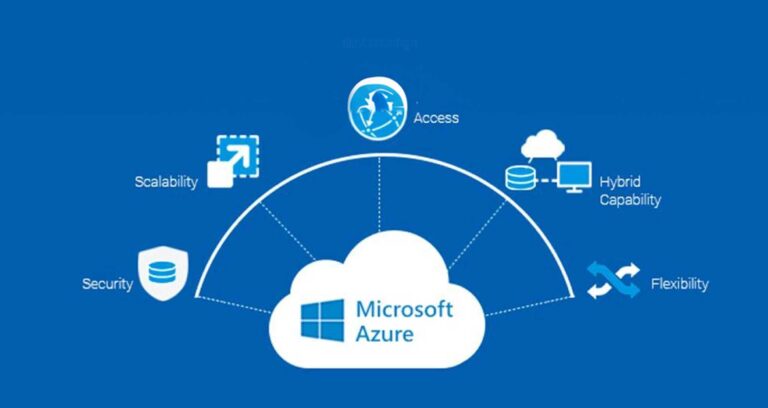
Today, staying ahead in a fast moving retail environment involves staying agile and innovative. Using digital screens to supplement retail displays is one of the better ways to encourage enhanced customer engagement. By combining the best of digital and of display, using visually attractive dynamic digital content for the right purposes, stores can design more immersive shopping experiences that bring customers and drive sales.
Ever wondered how your retail display evolved to its present state?
Unlike the old days stuff caked on shelves, retail displays have come a long way. Gondolas, mannequins, and slat walls have long been a trusted resource for merchandising merchandise on a somewhat traditional basis. But with advancing tech and changing customer behavior, there’s a cry for offering more engaging and interactive retail solutions.
The versatility and dynamism digital screens bring to the table can really bring some of these displays back to life. Retailers use it to showcase video content, highlight promotions, and give real time information to customers, with the best of physical and digital worlds.
Incorporation of Digital Screens has its benefits.
1. Enhanced Customer Engagement
And with digital screens, you can attract shoppers with visually appealing content that traditional displays cannot deliver simply. Eye catching vibrant videos & dynamic animations get customers to stay longer and interact with the display more.
2. Increased Sales Potential
Retailers can influence purchase decision by showing promotional offers, cross selling opportunities or even tutorials over digital screens. For example, an embedded display in a skincare product could display application techniques tutorials which could increase sales.
3. Flexibility and Customization
And unlike static displays, digital displays can be updated in real time with new promotions, seasonal campaigns or even personal messages. It gives retailers the flexibility of keeping themselves relevant and appealing to particular segments of audience.
4. Space Efficiency
Retailers are able to make the most of their limited floor space by integrating screens into store fixtures. Digital content allows for a more impactful message, and does away with bulky printed materials.
5. Data Collection and Insights
Digital screens have built in analytics–tracking customer interaction and dwell time, for example. These insights assist retailers in adjusting their retail display strategies and improve their retail display efficiency.
Design Effective Digital Integrated Displays
To make the most of this innovative approach, retailers should consider several factors when designing digital-integrated displays:
1. Store Fixtures can be supported under several conditions.
Digital screens should incorporate into the current store fixtures, improving its functionality without destroying the design. For example, a screen can be embedded into shelving or even into a mannequin pedestal, so that everything has a cohesive look.
2. High-Quality Content
Digital displays are king content. The screens should display videos and graphics that are both attractive and in line with what it is they are saying. Content which is quality can greatly improve a customer perception and drive some engagement.
3. Strategic Placement
The advantage of maximum visibility can be realized by positioning digital displays in high traffic areas or near point of sale counters. Also, it’s a good idea to make the screens eye level and easily reachable by customers to improve their usability.
4. User-Friendly Interfaces
A user interface for interactive screens should be intuitive and interactive. Such a format helps the customers to navigate the content easily irrespective of whether if they are looking for a product catalog or checking out the customization options.
Case Studies: Success Stories in Retail
1. Fashion Retailers
Digital screens have been very successfully integrated into the designs of major fashion brands’ stores. Screens that appear behind mannequins can display runway footage or styling tips, for example, to give retail displays some pop. It allows customers to be inspired and builds their will to buy more complete outfits rather than single items.
2. Electronics Stores
Digital screens are used by electronics retailers to give product features. When you’re showcasing a new smartphone on display, there might be a screen displaying some of the camera’s prowess or battery life. This interactive element aids in making customers well informed.
3. Grocery Stores
Digital displays of supermarkets and grocery stores are used for product promotions, recipe ideas and way finding. Buying information on the spot, by means of embedding screens in store fixtures like end caps or refrigerated units, delivers relevant and timely information to the shoppers.
Overcoming Challenges
While the integration of digital screens into traditional displays offers numerous benefits, it also comes with challenges that retailers must address:
1. Initial Costs
Digital screens and the related infrastructure can be expensive upfront investment. The expense is justified by retailers if it leads to long term benefit such as increasing sales and customer loyalty.
2. Maintenance and Updates
To continue to be effective, digital displays need regular maintenance and regular content updates. Therefore, retailers need to allocate resources so screen presence can be functional and pertinent.
3. Avoiding Overload
Customers are becoming overwhelmed and the shopping experience inhibited by too many digital elements. Retaining a cohesive and inviting retail environment depends on blending digital and traditional components.
Digital Screens in Retail: The Future
With progress in technology, the applications of digital screens to the retail displays are becoming increasingly complex. Emerging trends include:
1. Integration of the Augmented Reality (AR)
Customers can use AR enabled screens to get interactive experience like virtual try on or 3D product visualizations. This creates one additional layer of personalization to the shopping journey.
2. AI-Powered Content
Artificial Intelligence can analyze customer’s preferences and can provide them personalize content in real time. For example, a screen might show tailored recommendations of a shopper’s browsing history.
3. Sustainability Initiatives
More and more, retailers are focusing on sustainability. The reliance on printed materials can be reduced by digital screens, and it is in line with ecofriendly and environmentally conscious consumers.
Conclusion
For modern retailers, it’s a game changer that integrates digital screens as part of a traditional retail display. It does this by combining the reliability of store fixtures with the innovation of digital technology in order to give businesses the ability to create unforgettable, capture customer interest, and increase revenue shopping experiences. The first investment and upkeep may be challenging, yet the long term y benefits of additional involvement, flexibility, and information based bits of knowledge makes this systems a prerequisite to maintain a strategic distance from the fate of retail. The embracing of this evolution permits retailers to remain competitive in the midst of almost constant evolution.
Write and Win: Participate in Creative writing Contest & International Essay Contest and win fabulous prizes.


